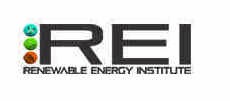|
Homeowners, Business Owners and Commercial Building Owners
* Replace the
"brown power" from central power plants and generate your own clean power and renewable energy that your home or business needs with our Net Zero Energy System
sm * YOU own ALL of the benefits of YOUR Net Zero Energy System sm from Day 1, including;
Investment Tax Credit Austin, Texas
Palm Springs, California
|
Net
Zero Energy sm
www.NetZeroEnergy.com

The "Desert Rose" development with 196 homes planned for Desert Hot Springs, California to be "Net Zero Energy" development - signs LOI to install proprietary Solar Cogeneration heat engine energy system that will generate MORE than 100% of the electric power needed with each unit having its' own Net Zero Energy system.
The
Desert Rose Community will NOT be connected to the national electric
grid but have its' own "Micro-Grid"
that distributes green power and energy onsite.
Could
this be the Beginning of the End for Traditional Electric Utilities and their High Electric Rates, Brown Power and Inefficient Electric Grid?
What
is "Net Zero Energy?"
Net Zero Energy - when applied to a home or commercial building, simply means that they generate as much power and energy as they consume, when measured on an annual basis.
The U.S. Army now has a Net Zero Energy initiative to help reduce/eliminate America's use of foreign oil - particularly oil from muslim/middle-east countries - which saves the lives of our brave soldiers in the military.
At the heart of a Net Zero Energy Building sm is the idea that any building can meet its energy requirements from low-cost, locally available, nonpolluting, renewable sources, like Solar Trigenerationsm Energy Systems. Solar Trigenerationsm Energy Systems are the idea whose time has come, to make Net Zero Energy Building sm commonplace.
Solar Trigenerationsm Energy Systems Provide All of the Cooling, Heating & Power, for Any Size Building, with only the Energy of the Sun. Solar Trigenerationsm Energy Systems Provide Simultaneous Cooling, Heating & Power whether it is 12 Noon, or 12 Midnight, and WITHOUT having to rely on the electric grid!
The Department of Energy developed the Commercial Building Initiative (CBI) and is pursuing the goal of marketable Net Zero Energy Building through research and partnerships.
The DOE's CBI has developed tools and resources to help the commercial buildings industry improve energy efficiency at various levels of energy savings.
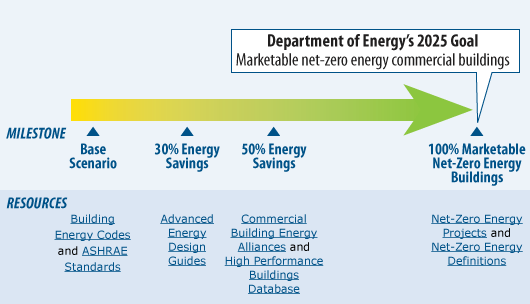
Department
of Energy's "Net Zero Energy" 2025 Goal
Marketable Net Zero Energy Commercial Buildings
______________________
Net Zero Energy Buildings Are Next Frontier
http://www.sustainablebusiness.com/index.cfm/go/news.display/id/23361
Revenue from net-zero energy buildings will grow rapidly over the next 20 years, reaching almost $690 billion
by 2020 and nearly $1.3 trillion by 2035, projects Pike Research. That's a compound annual growth rate of 43%.
______________________
Net Zero Energy
Market to Become $1.3 Trillion/year Industry by 2035
http://www.navigantresearch.com/newsroom/revenue-from-net-zero-energy-buildings-to-reach-1-3-trillion-by-2035
______________________
Net Zero Energy Buildings Are Coming - What About The Buildings Already Standing?
http://www.forbes.com/sites/justingerdes/2012/02/28/net-zero-energy-buildings-are-coming-what-about-the-buildings-already-standing/
|
|
"Changing the Way the World Makes and Uses Energy" SM
![]()
Now forming "LOCAL" Net Zero Energy Chapters across USA.
>>> Local Net Zero Energy Chapter Leaders wanted. <<<
After signing up as a member of the
National Net Zero Energy group,
send an email to us at;
Include the following information;
Your
name, phone number and e-mail address. Be sure to include any experience with;
Net Zero Energy, architecture, construction, energy, utilities, energy
conservation measures, energy efficiency, etc. and why you would like to
become a Chapter Leader.
Desert Hot Springs, California
Renewable Energy Institute
June 17, 2013
Britanny West, the developer for Desert Rose is planning to build the
196 Net Zero Energy Homes in both a sustainable and autonomous
manner. This means the homeowners will NOT be connected to the electric grid (SoCal
Edison)
and will not receive monthly electric bills from SoCal Edison.
According to the developer, the electric grid is no longer needed
because of a proprietary Solar Cogeneration
/ Heat Engine system that generates more clean power and renewable
energy than needed by the families living in the new development.
The surplus electric power will be stored in the community's battery
energy storage system. The surplus hot water will be stored in a
large tank which is insulated, much like a large thermos and referred to
as a thermal energy storage system.
All of the power and energy required by the 196 homeowners at the Desert Rose community will be produced via a decentralized energy solution run by the energy from the sun. The Solar Cogeneration energy system at the Desert Rose features a Heat Engine that was developed in part with a major
university in Texas. The
combination solar thermal system and 5 kW heat engine (the optimum size for a typical
home) will generate approximately 1,200 kWh's of electricity each month
and store the excess power in the community's Battery Energy Storage
system. The 5 kW heat engine will also generate clean, renewable
power with ZERO:
-
foreign oil
-
fossil fuels
-
fuel costs
-
greenhouse gas emissions
-
hazardous air pollutants
-
mercury emissions
-
nitrogen oxides (NOx)
-
sulfur dioxides (SOx)
As ALL of the power and energy required by each homeowner will be generated onsite, through each homeowners Clean Power Generation system, there simply is no need for the electric grid or additional power.
The 196 NZE homes in the Desert Rose community will generate > 100% of its' electricity and energy (hot water) requirements from its' own Solar Cogeneration energy system that features a 5 kW Heat Engine coupled with a Solar Thermal system that produces >150 degree hot water. The heat engine produces practically-free electricity by means of a
"temperature differential" between two sources of water with
as little as ten degrees difference between each, which provides the
energy to produce clean power.
In recent validation tests with a division of the Department of Energy earlier this year, the manufacturer of the heat engine (in association with the engineering department at a major university in Texas) generated power with only a 10 degree temperature difference between the two water sources - in this case, a bucket of water at 70 degrees, and the other bucket of water at 80 degrees. This 10 degree temperature between the two buckets of water, generated free electricity and powered a light bulb. This same technology will power the homes at the Desert Rose community.
The Heat Engine selected by Britanny West generates practically-free electricity by means of a temperature differential from two water sources that
are planned to have a minimum of 70 degree temperature differential,
which means the heat engines will be smaller and more efficient. The
temperature of the water coming to the Desert Rose homes from the city of Desert Hot Springs
water mains may be as high as 80 degrees in the summer. As the temperature from the solar thermal system on each rooftop will be at least 150 degrees, this means there is more than double the temperature differential required, and as a result the size requirements for the heat engine will be reduced by 50%.
The heat energy required to produce the renewable energy from the heat engines can be generated from a variety of resources including; flat plate collectors, solar thermal collectors or evacuated tube collectors, all of which generate hot water and all will be mounted on the roof-tops. Geothermal
is also a preferred source for providing the heat energy for running the
heat engines as is the "waste heat" from boilers, engines,
furnaces, gas compression, power plants, turbines and other industrial
sources. Interestingly, Desert Hot Springs is known for its hot springs however, obtaining a permit to tap this energy resource is timely and costly and therefore Britanny West will be selecting the solar thermal energy system for the energy source to run the heat engines.
Phase 1 for the Desert Rose community beginning 2014. Estimated selling price for new Net Zero Energy homes - $350,000.
Electricity costs to the homeowners in Desert Rose DECREASE in Year 11 by approximately 80% when the Solar Cogeneration / Heat Engine systems are paid for with the operations and maintenance expenses of approximately 5 cents/kWh to be charged to the homeowners. Electric utility costs at that time (2024) are expected to exceed 25 cents/kWh.
For more information on the Desert Rose community of 196 Net Zero Energy homes, call Britanny West at (760) 902 - 2432.
Why "Net Zero Energy
Matters
Americans spend more than $400 billion every year for electricity and natural gas for our homes and commercial buildings, consuming more than 70% of all the electricity used in the United States, which is about 40% of our nation's total energy bill. This also contributes almost 40% of the nation's carbon dioxide emissions.
By standardizing on Net Zero Energy and upgrading existing commercial buildings to Net Zero Energy, the USA increases energy efficiency and reduces the purchases of energy from all sources, both foreign and domestic.
Net Zero Energy Protects your Financial Health
The average family spends $2,200 each year on the power and energy needed for their homes. A Net Zero Energy home can reduce this amount by 80% to 100%.
Net Zero Energy
Protects your Health and the Environment
Did you know that buildings (homes and commercial buildings) are responsible
for:
-
almost 40% of the our country's greenhouse gas emissions
-
18% of the nitrogen oxides (emissions)
-
55% of the sulfur dioxide emissions.
These harmful emissions are generated from the combustion of fossil fuels, which cause acid rain, haze, smog and cause breathing/respiratory problems for thousands of people. By increasing the energy efficiency of our country's homes and commercial buildings, we reduce these harmful emissions while reducing our monthly utility and transportation expenses. Imagine, never again receiving a monthly bill from your electric power or natural gas utility company! Having a Net Zero Energy home or business can do that, or provide the option to "cut the cord" to the electric company in the future.
Every new Net Zero Energy home or commercial building helps our country reduce (energy-related) greenhouse gas emissions. There is a goal of reducing greenhouse gas emissions from fossil fuels of 17% by 2020.
Net Zero Energy
Protects America's Economy and Leads to Energy Independence
The USA is still dependent on
foreign oil. Each day, the USA shifts the wealth of Americans, to foreign
countries and foreign jobs. With oil at $100/bbl, Americans send about
$1.3 billion for the foreign oil we buy which adds up to almost $1/2 trillion
every year. And that's also costing America thousands of jobs.
Net Zero
Energy will help America become energy independent,
create thousands of jobs in the USA and reduce our dependence on foreign oil
from insecure sources and from countries that do not agree with our country's
leadership or policies.
Building (and upgrading) homes and commercial buildings to Net Zero Energy with less reduces the problems relating to an old, inefficient electric power grid. Increased Net Zero Energy homes and commercial buildings also saves the need for building new central power plants running on fossil fuels, that are still highly inefficient at no more than 50% efficient.
What does a Net Zero Energy home or building look like?
Net Zero Energy homes and commercial buildings can look like any other residential home, hospital, school or commercial office building, they do NOT have to be ugly or modern in appearance to be Net Zero Energy!
And, your present home or commercial building can be updated to Net Zero Energy.

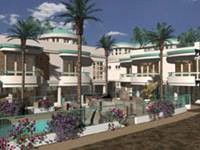










Austin, Texas
Palm Springs, California
![]()
|
CHP
Systems * Micro-Grid
* Solar
Cogeneration *
Solar
Thermal Systems
* Solar
Trigeneration
|
The U.S. Army Supports Net Zero Energy
The US Army announced (April 19, 2012) the locations for 8 new
Army facilities that will be pilot
Net Zero Energy installations. As part of the Army’s overall effort to conserve
resources, net zero
energy installations will consume only as much energy (as well as water -
"Net
Zero Water") - as they produce and eliminate solid waste to landfills.
The announcement initiates the programmatic environmental analysis and planning process for the Army’s Net Zero
Energy and Net Zero Water Installation Strategy.
The U.S. Army has identified 6 new Net Zero Energy pilot installations that will be built as Net Zero Energy facilities plus 2 other installations that will be Net Zero Energy and Net Zero Water - all to be built and online by 2020.
The U.S. Army's definition of "net zero energy" is similar to that of the industry, which is a home, building or facility "generates as much energy on site as it uses, over the course of a year."
The Army’s pilot net zero energy installations are located at the following U.S. Army's installations:
-
Fort Detrick, Md.;
-
Fort Hunter Liggett, Calif.;
-
Kwajalein Atoll, Republic of the Marshall Islands;
-
Parks Reserve Forces Training Area, Calif.;
-
Sierra Army Depot, Calif.;
-
West Point, N.Y.
Additionally, the Oregon Army National Guard volunteered to pilot a unique
as well as challenging Net Zero Energy Initiative, which includes all of their installations across the state.
Their strategy will be included in the environmental analysis.
What is a Net Zero Energy
Building
sm
A Net Zero Energy Building sm produces as much energy as it uses over the course of a year.
A Net Zero Energy Building sm is very energy efficient. The remaining low energy needs are typically met with on-site renewable energy.
First of all, understand that there is no such thing as a "zero energy building!" EVERY building uses energy, or you may as well be in a cave!
The important considerations are,
1. How efficient is the building?
2. How much energy does the building use, and how efficiently is it used?
3. How much renewable energy and clean power is generated by the buildings' own onsite renewable energy system?
4. What are the utility company's prices for the excess power generated and sent to the grid?
5. How difficult is it to interconnect the renewable energy system of the building with the utility company's powerlines/electric grid?
Press Release
Feb 14, 2012
Washington, D.C.
by the Renewable Energy Institute
HR 4017, the Smart Energy Act, was introduced in the U.S. House of
Representatives by Representatives Charles Bass (R-NH) and Jim Matheson
(D-UT). The Smart Energy Act seeks to establish financing mechanisms for energy efficiency retrofits for buildings and
also to set a national goal to double the
amount of power generated by CHP
Systems which includes cogeneration
and trigeneration
systems, to 170 Gigawatts by 2020.
What is Battery
Energy Storage?
Battery Energy Storage, and Battery Energy Storage systems (BESS) use stored electrical power in batteries, and feed this energy to the electric grid (building, or facility) at times when it makes economic sense.
For a "Net Zero Energy" building or facility, a Solar Cogeneration, or Solar Trigeneration energy system is used that stores excess solar power in the Battery Energy Storage system during the daytime, for use when the sun goes down, and during inclement weather.
Battery Energy Storage is an ideal solution for utility-scale wind farms, particularly in Texas, when most of the renewable energy is generated at night when the power isn't needed.
Battery Energy Storage is a leading "dispatchable wind" solution making wind power available 24 x 7.
And, Battery Energy Storage is an ideal demand side management, peak shifting or load leveling solution as well as reducing emissions
According to Sandia Labs in their report titled; "Energy Storage for the Electricity Grid; Benefits and Market Potential Assessment Guide" (February 2010), the market for energy storage exceeds $100 billion during the next ten years.
What are Buildings of the
Future?
Buildings of the Future are totally sustainable, built with all sustainable materials, include rainwater collection and at the heart of all Buildings of the Future, are "Net Zero Energy" systems, which allow the building owner to operate with or without connection to the electric utility.
What
is Bulk Energy
Storage?
Bulk energy storage refers to various methods to "store" electricity within an electrical power grid.
Electrical energy can be stored during times that electrical generation from power plants exceeds the consumption by customers and the stored energy can then be utilized at times when consumption of electricity exceeds generation of electricity. Bulk energy storage permits power generation to be maintained at a more constant level, avoiding the sharp spikes in power generation so that the power plants can be more efficiently operated - reducing fuel consumption thereby reducing greenhouse gas emissions.
According to Sandia Labs in their report titled; "Energy Storage for the Electricity Grid; Benefits and Market Potential Assessment Guide" (February 2010), the market for energy storage exceeds $100 billion during the next ten years.
What
are CHP Systems?
A CHP System - also known as a cogeneration plant, is the simultaneous production of power and thermal energy.
Stated another way, a CHP System integrates an onsite, "decentralized energy" (DE) or "dispersed generation" power and energy system with thermally-activated power and energy technologies such waste heat recovery and/or absorption chillers for heating and/or cooling applications.
CHP
Systems achieve these greater energy efficiencies
through the conversion of exhaust or reject heat from power generation into
needed energy services like cooling and heating of buildings as well as
campuses. This is called "Waste
Heat Recovery" or "Recycled
Energy." Development of "packaged" or
"modularized" CHP
Systems for end-use applications, such as commercial and
institutional buildings, is something the founder of our company has been
involved with since the mid 1980's.
In the past, Cogeneration
plants have been economically attractive only in sizes above several megawatts.
The emergence of a number of small generation technologies, including fuel
cells, advanced low emissions engines, and gas turbines
with outputs in the 1000 kW - 5000 kW range, should extend the benefits of Integrated
Energy Systems to a much larger user base, with a consequent increase in
national energy and environmental benefits.
For example, the application of CHP Systems (including Absorption Chillers - or - ADsorption Chillers) in commercial buildings could reduce commercial building energy consumption by 30%.
Application
of such smaller-scale packaged CHP
Systems provides a major breakthrough in energy efficiency
technology, energy savings as well as reduced greenhouse
gas emissions. And, by locating the power generation at or near the
end-user/consumer, i.e. their facility, building, or campus, the difficulties in
siting and building new electric transmission and electric distribution
infrastructures to meet today's increasing power demand are minimized.
There are numerous markets for Cogeneration
/ Trigeneration
plants, CHP Systems,
District
Energy Systems for commercial or institutional buildings, government
facilities, and district energy systems that distribute thermal energy to
buildings in a college campus, hospital complex, industrial park, food
processing operations, refrigerated warehouses, and also very attractive for
cities.
What
is "Cogeneration"?
Did you know that 10% of our nation's electricity now comes from "cogeneration" plants?
And
because cogeneration
is so efficient, it saves its customers up to 40% on their energy expenses, and
provides even greater savings to our environment through significant reductions
in fuel usage and much lower greenhouse
gas emissions.
Cogeneration
- also known as “combined
heat and power” (CHP), cogen, district energy, total energy, and
combined cycle, is the simultaneous production of heat (usually in the form of
hot water and/or steam) and power, utilizing one primary fuel such as natural
gas, or a renewable fuel, such as Biomethane,
B100 Biodiesel,
or Synthesis Gas.
Cogeneration technology is not the latest industry buzz-word being touted as the solution to our nation's energy woes. Cogeneration is a proven technology that has been around for over 120 years!
Our nation's first commercial power plant was a cogeneration plant that was designed and built by Thomas Edison in 1882 in New York. Our nation's first commercial power plant was called the "Pearl Street Station."
Decentralized Energy is the Best Way to Generate Clean and Green Energy!
How we make and distribute electricity is changing!
The electric power generation, transmission and distribution system (the electric "grid") is changing and evolving from the electric grid of the 19th and 20th centuries, which was inefficient, highly-polluting, very expensive and “dumb.”
The
"old" way of generating and distributing energy resembles this slide:
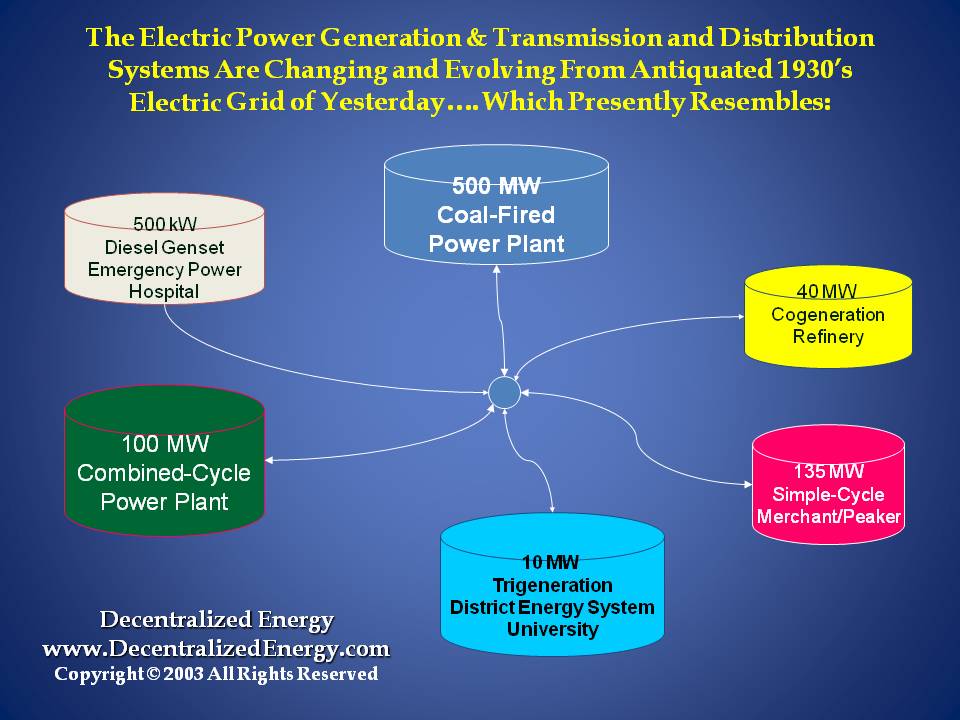
Some customers will choose to dis-connect from the grid entirely. (Electric grid represented by the small light blue circles in the slide below.)
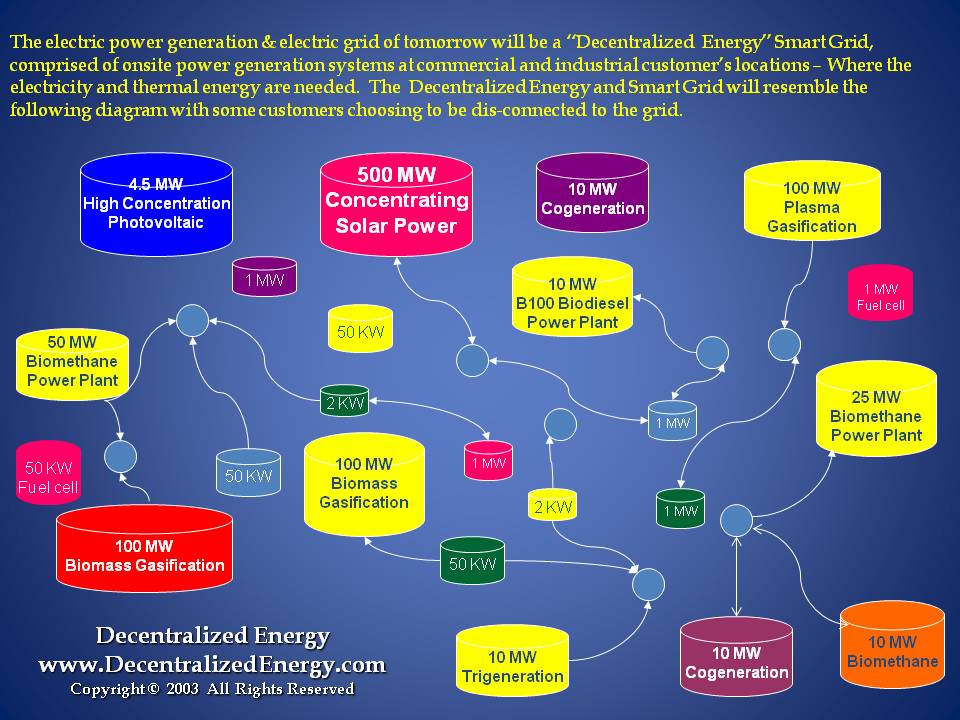
Typical "central" power plants and the electric utility companies that own them will either be shut-down, closed or go out of business due to one or more of the following: failed business model, inordinate expenses related to central power plants that are inefficient, excessive pollution/emissions, high costs, continued reliance on the use of fossil fuels to generate energy, and the failure to provide efficient, carbon free energy and pollution free power.
Carbon free energy and pollution free power reduces our dependence on foreign oil and makes us Energy Independent while reducing and eliminating Greenhouse Gas Emissions.
What is Demand
Side Management?
According
to the Department of Energy, Demand Side Management or "DSM," refers
to those "actions taken on the customer's side of the meter to change the
amount or timing of energy consumption. Utility DSM programs offer a variety of
measures that can reduce energy consumption and consumer energy expenses.
Electricity DSM strategies have the goal of maximizing end-use efficiency to
avoid or postpone the construction of new generating plants."
Therefore, Demand Side Management, is the process of managing the consumption of
energy, generally to optimize available and planned generation resources.
While not every business is a candidate for onsite
power generation, such as an onsite cogeneration
or Trigeneration
energy system, however, your company may be a great candidate for other
energy-saving solutions. One of these is Demand Side Management, or
"DSM". We help commercial, industrial and utility clients by providing
cost-effective DSM, clean power and renewable energy solutions.
What is "Dispersed
Generation"?
Dispersed Generation, also known as distributed generation or Decentralized Energy - is the production of power "onsite" where the power and energy in the case of cogeneration, "ecogeneration," trigeneration and even quadgeneration (hot water, steam, chilled water) - which is the opposite of "centralized energy" and central power plants where huge amounts of energy are lost in the form of waste heat. This wasted heat is energy that could be, and should be recovered via waste heat recovery which increases efficiency, reduces energy costs/greenhouse gas emissions.
Dispersed Generation is defined as the efficient deployment of clean, efficient and renewable power, which are located near a "load center" and are in the 10 MW to 150 MW to as much as 300 MW range.
What are "Distributed
Energy Resources"?
Distributed Energy Resources (DER) are small, modular, energy generation and energy storage systems and technologies that provide electric capacity or thermal energy (i.e. hot water, chilled water, steam) where and when a commercial or industrial client requires.
Typically, Distributed Energy Resources generate less than 10 MW (megawatts).
Distributed Energy Resources are highly flexible and adaptable, and can therefore, be sized to meet any customer's specific power and energy requirements, at the customers facility or business.
As they are flexible and adaptable for nearly any customer's specific requirements, DER systems can be installed to operate with the local electric grid, or be designed and installed "grid-free" without connecting to the electric grid in island or stand-alone mode.
What is an
Energy Master Plan?
Now that greenhouse gas reporting is a vital and urgent issue for thousands of business in the U.S., and as they will now have to report their greenhouse gas emissions to the EPA. Our Energy Master Plan format has been updated to include "emissions abatement" strategies.
Our energy master planning services are also focused in a broader focus as well for our customers interested in sustainable energy solutions for reducing their carbon footprint, fossil fuel intensity, total energy expenses, potential for blackouts as well as their overall vulnerabilities to being "tied" to their specific electric utility. Our energy master planning services also improve the air quality and work environment for all of our client's stakeholders through our focus on triple bottom-line results.
Our energy master planning services are not solely focused on our client's facilities' "demand side" of the energy equation, but also how our client's energy is acquired and purchased on their supply side. This understanding that supply and demand side planning is equally important enabled a holistic review of how CUMC uses and pays for energy and the impact of these sources on the environment.
Our energy master plan begins with a review of our client's past three years electricity, natural gas, oil, waste and water expenditures and depending on the final requirements and project scope authorized by the client, will typically include;
-
Perform ASHRAE " Level 2" Energy Audit
-
Perform a "retro" commissioning study
-
Provide a "benchmark" of client's energy use and their greenhouse gas emissions
-
Identify automated demand response and demand side management opportunities
-
Review client's current energy procurement methods and develop new strategies for reducing energy expenses
-
Identify opportunities for onsite power generation, including cogeneration, ecogeneration or trigeneration energy systems as well as renewable energy technologies such as; Distributed PV, Solar Cogeneration and Waste to Fuel
-
Review existing Power Purchase Agreements and all other energy agreements/contracts.
-
Identify external funding opportunities such as the use of Power Purchase Agreements
-
Identify opportunities for "fuel switching" or energy switching such as propane to natural gas and "cutting the cord" to the client's electric utility for an onsite power generation energy system.
-
Identify current energy management system and/or building automation system potential
-
Identify LEED opportunities
-
Identify Smart Metering, Micro-Grid and Unified Smart Grid opportunities
What is Frequency
Regulation?
The electric grid is kept in balance at 60 hz. Any deviation from this may cause serious problems ranging from damage to destruction of electrical equipment to a blackout. Because the supply and demand of electricity is always changing, the grid's frequency is always changing and it is critical the electric grid to be kept in balance and maintain 60 hz. The continuous and instantaneous balancing of supply and demand of electricity is known as "frequency regulation" or frequency response.
Flywheel Energy Storage systems follow the regulation signal within a fraction of a percent. Unlike generation based frequency regulation, no fuel is consumed, and no emissions are generated. Analysis of presently used frequency regulation signals indicates that an energy storage module, which can store or deliver 1 MW for 15 minutes, would provide regulation services superior to services currently provided by generators.
According to Pike Research, the requirements for frequency regulation is expected to double between now and 2020.
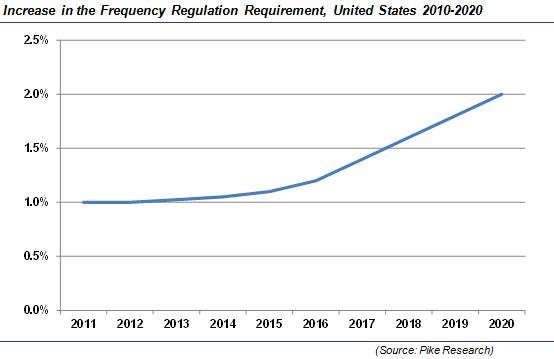
What is Free Power and Energy?
Free Power and Energy are the various Net Zero Energy systems that we design and install for homeowners and business owners that provide them with free power and energy - as opposed to outrageous monthly electric and/or natural gas bills every month.
We are the leader in Solar Cogeneration and Solar Trigeneration energy systems that were first installed in 2002 which can provide free power and energy for our residential and commercial clients.
God gave us the sun for free. He did NOT connect an electric meter to the sun to charge His children for our use and for His free energy, and neither should utility companies!
What
is Front
End Loading?
Front-end
Loading, also known as Front End Engineering Design, or
"FEED," is the preliminary engineering and conceptual design completed
in advance of the start of EPC (Engineering,
Procurement Construction). Front End Loading oftentimes concludes
with the engineering firm's presentation of an Engineering
Feasibility Study or Analysis.
Front-end Loading
includes a design team that includes and integrates all or most engineering
fields such as mechanical engineering, electrical engineering, environmental
engineering, civil engineering, power engineering, chemical engineering, etc.
The FEED design team includes the project visualization and conceptualization
stages, including "what-if" decision making analyses, integrating the
client company's goals, objectives into an efficient and economic engineering
solution.
Front-end Loading is a highly valuable engineering design service not only for the client but the engineering company as well because it includes "robust" planning and engineering design early on in a project's lifecycle (i.e., the front-end of a project). This is particularly beneficial at the early stage of a project as this is when the ability to influence changes in the design is relatively high and the cost to make those changes is relatively low. Front-end Loading typically applies to industries with highly capital intensive, long lifecycle projects (millions or billions of dollars - and several years before revenues are generated from the completed and commissioned project).
Although Front-end Loading adds a small amount of time and cost to the early stage of a new project, these costs are minor compared to the expenses and efforts required to make any changes at a later stage in the project's life-cycle. In addition, Front End Loading typically includes a "stage-gate" process, whereby the project must pass through formal "gates" at pre-defined milestones within the project's lifecycle before funding is received to proceed to the next stage of work.
What is Locational
Marginal Pricing?
Locational
Marginal Pricing, or LMP, is a market-pricing solution
for ensuring the efficient use of the electric power transmission system when
"congestion" occurs within the electric power grid.
What is Congestion?
Congestion
occurs within the electric power grid when one or more restrictions on the grid
prevents the economic - and most expensive power supply - from serving electric
power demand. For example, the electric power transmission lines may not have
enough capacity to carry all of the electricity to meet the demand in a specific
location. When this happens, it is referred to as a "transmission
constraint." Locational Marginal Pricing includes the costs for supplying
the more expensive electricity in these "constrained" locations, which
then provides a precise, market-based solution for pricing the electricity, and
includes the "costs of congestion."
Locational
Marginal Pricing provides the participants of the
marketplace, a clear, transparent and accurate signal of the price of
electricity at every location along the electric power transmission lines within
a specified electric grid. These LMP prices, in turn, reveal the value of
locating new generation, upgrading transmission, or reducing electricity
consumption elements needed in a well-functioning market to alleviate
constraints, increase competition and improve the system's capabilities for
meeting the electric power demand.
What is a Micro-Grid?
According to the Department of Energy, a micro-grid is "a group of interconnected loads and distributed energy resources within clearly defined electrical boundaries that acts as a single controllable entity with respect to the grid. A micro-grid can connect and disconnect from the grid to enable it to operate in both grid-connected or island-mode."
What is Peak
Shifting?
Peak Shifting is a highly cost-effective method of reducing electric utility expenses. When electric utility commercial or industrial customers use electricity can make a big difference on their monthly electric bills. By shifting the time of day that electric power is used, a commercial or industrial customer can reduce their " demand charge" portion of their electric bill during peak times of the day. This reduces the overall cost of power each month for the customer.
Unlike
most products, electricity can’t be stored after it's generated. Electricity
must be generated - and consumed - at the time of demand by a utility's
customer. Electricity usage continuously varies throughout the day, and varies
from month-to-month and season-to-season. Each day, there are "peak"
demand periods of usage during which time the electric utilities must generate
additional amounts of electricity to meet these peak demands for all of their
customers.
To meet this additional peak demand for electricity utilities use “peaking
generators” also called "peaking plants" or simply "peakers."
These peaking plants are the least efficient methods of generating power,
meaning they generate less power with more fuel (and their associated greenhouse
gas emissions) compared with the utility's base-load generators. These peaking
plants typically burn oil or natural gas to produce the electricity and are
brought on line only during "peak periods" of the day and run for
short periods.
While
peaking generators generally cost less to build than other types of generators,
they also have relatively high fuel costs because they are typically much less
efficient in the use of fuel.
Therefore, "Peak
Shifting" is a method that addresses
shifts the time of day when electricity is used, reducing the need for peaking
plants and can reduce a commercial or industrial customer's electric bills, if
correctly implemented.
What
is "Trigeneration"?
Trigeneration is the simultaneous production of three forms of energy - typically, Cooling, Heating and Power - from only one fuel input. Put another way, our trigeneration power plants produce three different types of energy for the price of one.
Trigeneration energy systems can reach overall system efficiencies of 86% to 93%. Typical "central" power plants, that do not need the heat generated from the combustion and power generation process, are only about 33% efficient.
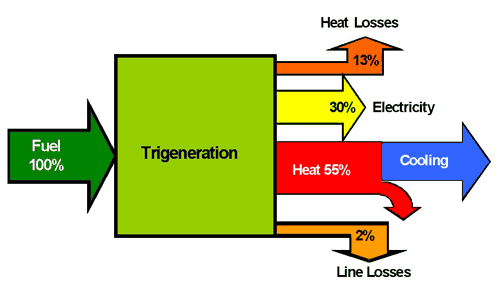
Trigeneration
Diagram & Description
Trigeneration Power Plants' Have the Highest System Efficiencies and are
About 300 % More Efficient than Typical Central Power Plants
Trigeneration
plants are installed at locations that can benefit from all three forms of
energy. These types of installations that install trigeneration
energy systems are called "onsite power generation" also referred to as
"decentralized energy."
One of our company's principal's first experience with the design and development of a trigeneration power plant was the trigeneration power plant installation at Rice University in 1987 where our trigeneration development team started out by conducting a "cogeneration" feasibility study. The EPC contractor that Rice University selected installed the trigeneration power which included a 4.0 MW Ruston gas turbine power plant, along with waste heat recovery boilers and Absorption Chillers. A "waste heat recovery boiler" captures the heat from the exhaust of the gas turbine. From there, the recovered energy was converted to chilled water - originally from (3) Hitachi Absorption Chillers - 2 were rated at 1,000 tons each, and the third Hitachi Absorption Chiller was rated at 1,500 tons. The Hitachi Absorption Chillers were replaced shortly after their installation by the EPC company. The first trigeneration plant at Rice University was so successful, they added a second 5.0 MW trigeneration plant so today, Rice University is now generating about 9.0 MW of electricity, and also producing the cooling and heating the university needs from the trigeneration plant and circulating the trigeneration energy around its campus.
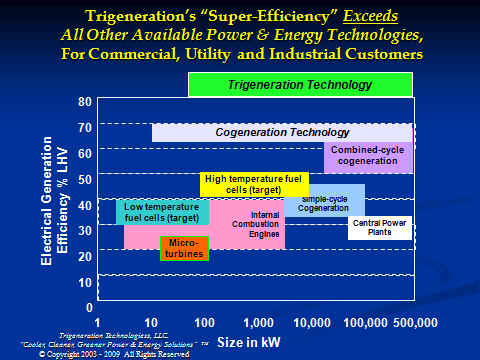
Trigeneration Chart
Trigeneration's
"Super-Efficiency" compared
with other competing technologies
As you can see, there is No Competition for Trigeneration!
Trigeneration power plants are the ideal onsite power and energy solution for customers that include: Data Centers, Hospitals, Universities, Airports, Central Plants, Colleges & Universities, Dairies, Server Farms, District Heating & Cooling Plants, Food Processing Plants, Golf/Country Clubs, Government Buildings, Grocery Stores, Hotels, Manufacturing Plants, Nursing Homes, Office Buildings / Campuses, Radio Stations, Refrigerated Warehouses, Resorts, Restaurants, Schools, Server Farms, Shopping Centers, Supermarkets, Television Stations, Theatres and Military Bases.
At about 86% to 93% net system efficiency, our trigeneration power plants are about 300% more efficient at providing energy than your current electric utility. That's because the typical electric utility's power plants are only about 33% efficient - they waste 2/3 of the fuel in generating electricity in the enormous amount of waste heat energy that they exhaust through their smokestacks.
Trigeneration is defined as the simultaneous production of three energies: Cooling, Heating and Power. Our trigeneration energy systems use the same amount of fuel in producing three energies that would normally only produce just one type of energy. This means our customers that have our trigeneration power plants have significantly lower energy expenses, and a lower carbon footprint.
About us:
The founder of the Renewable Energy Institute (REI) was first involved in Net Zero Energy buildings and Solar Trigeneration sm energy system in 2001 - 2002. This started with family-owned real estate developments in Northern and Southern California. This interest was accelerated when REI's founder was introduced to the President of a solar company in Los Angeles and their client, the Audubon Nature Center at Deb's Park (Los Angeles) that was planning to build a new 5,000 sf office and conference center. Except, the new building for the Audubon Nature Center was about 1/2 mile from the end of the power lines and a very costly extension of the power lines to their new facility forced them to consider a solar solution. When the Audubon Nature Center's new 5,000 sf office and conference center was completed in 2003, the facility not only featured the Solar Trigeneration sm energy system - they were awarded one of the first Platinum LEED Awards by the USGBC - and the powerlines were still 1/2 mile away! To this day, 100% of the power and energy for the Audubon Nature Center's building is supplied by the Solar Trigeneration sm energy system - whether at 12 noon, or 12 midnite. (The Audubon's facility also includes a battery energy storage system for back-up power generated by the Rooftop PV panels as well as a thermal energy storage system that stores the excess hot water generated by the evacuated tube collectors).
These early projects led to more client inquiries and engagements with real estate developers, architects and building owners in Southern California, Louisiana and Texas and the advent of a growing Net Zero Energy industry along with Solar Cogeneration sm & Solar Trigeneration sm energy systems. This culminated in a family-owned 200 (Net Zero Energy) home real estate development in Desert Hot Springs which has been approved but not yet constructed.
During this time, the REI's Founder became a volunteer and Advisor to the University of Texas' Solar Decathlon Competition. He coordinated the donation of the same solar thermal system used at the Audubon Nature Center's facility in Los Angeles, for UT's entry in the 2002 Solar Decathlon Competition in Washington, D.C. UT's entry in the Solar Decathlon Competition placed 1st in the domestic hot water competition that year (2002) and 4th overall, out of 20 universities that had entered.
In 2006, after Hurricane Kattrina devastated New Orleans, the REI was formed and several of the REI's board members and a Professor from the University of Texas School of Architecture formed a design team to enter the Brad Pitt/Global Green Rebuild New Orleans Competition. Our entry also focused on sustainable building solutions and materials as well as the Net Zero Energy concepts, incorporating once again, a Solar Trigeneration sm energy system.
Today, the REI "Flagship" has chartered the Renewable Energy Institute in Florida, with discussions to open REI state chapters in Arizona, California, Hawaii, Minnesota and Oregon.
The REI supports greater use of Net Zero Energy systems by architects, builders, homeowners and owners of commercial buildings. This includes "upgrading" homes and commercial buildings to Net Zero Energy. The REI provides Net Zero Energy; advertising, business development, conferences, e-commerce, education, marketing, online marketing, public relations, renewable energy, sales and strategic marketing solutions for architects, builders, cities, colleges, HVAC contractors, Net Zero Energy developers, real estate developers and universities.
Net Zero Energy
Market to Become $1.3 Trillion/year Industry by 2035
http://www.navigantresearch.com/newsroom/revenue-from-net-zero-energy-buildings-to-reach-1-3-trillion-by-2035
Net Zero Energy Buildings Are Coming - What About The Buildings Already Standing?
http://www.forbes.com/sites/justingerdes/2012/02/28/net-zero-energy-buildings-are-coming-what-about-the-buildings-already-standing/
American Energy Plan
sm
www.AmericanEnergyPlan.org
NO FOREIGN OIL!
Support
Renewable Energy
and America's
Renewable Energy Technologies
resources and companies!
“spending
hundreds and hundreds and hundreds of billions of dollars every year for oil,
much of it from the Middle East, is just about the single stupidest thing that
modern society could possibly do. It’s very difficult to think of anything
more idiotic than that.”
~ R. James Woolsey, Jr., former
Director of the CIA
|
Price of Addiction ### to Foreign Oil |
According to R. James Woolsey, for Director of the Central Intelligence Agency, “The basic insight is to realize that global warming, the geopolitics of oil, and warfare in the Persian Gulf are not separate problems — they are aspects of a single problem, the West’s dependence on oil."
We support the Renewable Energy Institute by donating a portion of our profits to the
Renewable Energy Institute
in their efforts to reduce fossil fuel use by transitioning to Renewable
Energy Technologies and reducing/eliminating Carbon
Emissions, Carbon
Dioxide Emissions and Greenhouse
Gas Emissions.
The Renewable Energy Institute
is "Changing The Way The World Makes and Uses Energy" SM
by providing research & development, funding and resources that reduce the
cost of Renewable
Energy Technologies and
making a faster transition to Carbon Free
Energy, Clean
Power Generation, & Pollution Free
Power."
Follow us on Twitter:
Follow @NetZeroEnergy
#NetZeroEnergy

![]()
"Changing the Way the World Makes and Uses Energy" SM
Net
Zero Energy System sm
www.NetZeroEnergySystem.com
Austin, Texas
Palm Springs, California
![]()
NetZeroEnergySystem.com
Copyright ©
2014
All rights reserved
